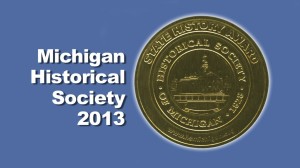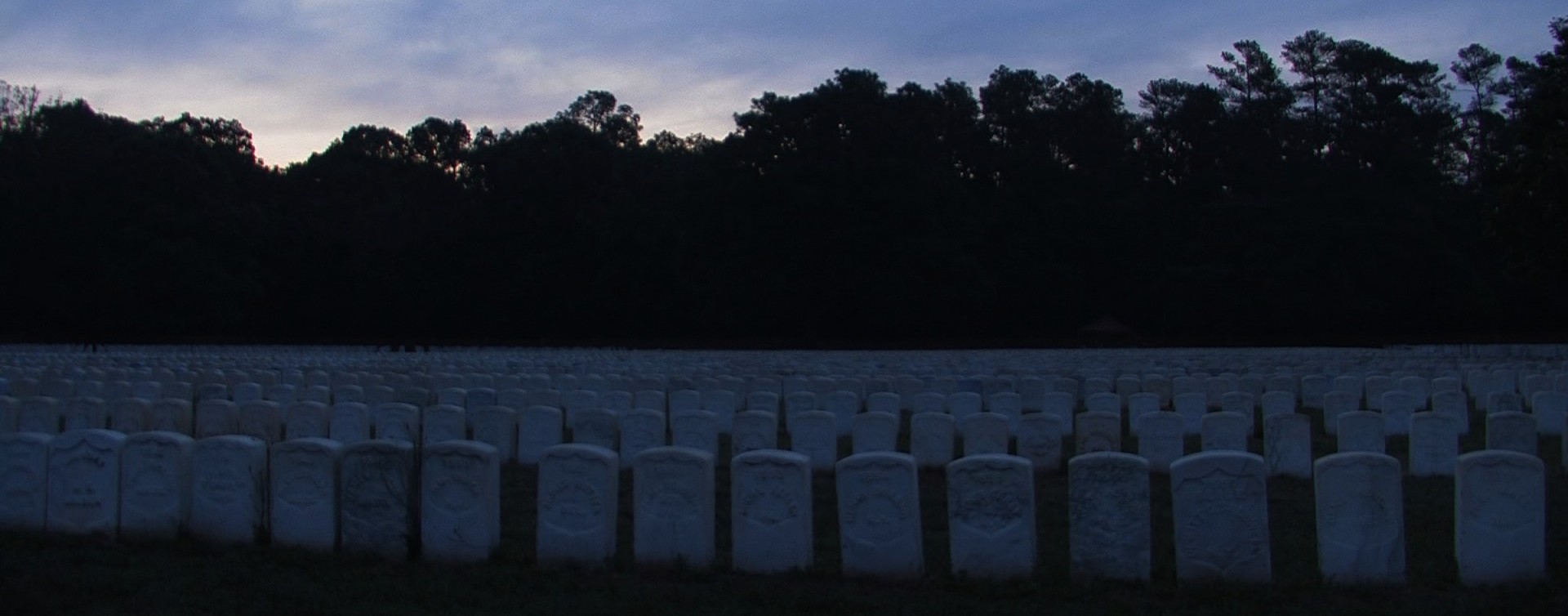During the American Civil War, Union forces ran low on sharpshooters. In Michigan, the answer was to change a law prohibiting Native American military service, and then—in 1863—to ask members of the Three Fires Tribes (Odawa [Ottawa]), Bodewadmik [Potawatomi], and Ojibway [Chippewa]) to enlist. These were men who lived in peaceful coexistence with their neighbors, Native American and white alike, and who also possessed legendary woodland and hunting skills. There existed among these men the important tradition of a warrior society, the Ogitchedaw, whose members were required to partake in battle.
 The Native Americans knew they were not likely to be well treated; they knew all too well the intentions of the whites who routinely effected displacements of other tribes resulting in horrific events such as The Trail of Tears in 1838. The Native Americans knew their way of life was at risk, and their accumulating losses of lands and culture were everywhere apparent. However, they also knew that if the South was successful in its campaign during the Civil War, they would likely be relegated to the status of slaves. Therefore, the members of the Three Fires Tribes responded with alacrity and in number: The first was Thomas “Big Tom” Kechittigo from Saginaw on May 3, 1863. Twenty five men from the Elbridge Reservation near Pentwater in Oceana County joined on July 4, 1863. Twenty-eight Ojibway from the Isabella reservation enlisted. A dozen Potawatomi also joined the ranks. Some others traveled from southwest Michigan to enlist in Company K. A few trekked from Canada. The Native Americans arrived at the Dearborn Arsenal to be trained into a cohesive fighting unit as members of Company K, First Michigan Sharp Shooters, the only all Native American unit in the North. Not one member of the 139 was Ogitchedaw; that meant not one member had experienced battle.
The Native Americans knew they were not likely to be well treated; they knew all too well the intentions of the whites who routinely effected displacements of other tribes resulting in horrific events such as The Trail of Tears in 1838. The Native Americans knew their way of life was at risk, and their accumulating losses of lands and culture were everywhere apparent. However, they also knew that if the South was successful in its campaign during the Civil War, they would likely be relegated to the status of slaves. Therefore, the members of the Three Fires Tribes responded with alacrity and in number: The first was Thomas “Big Tom” Kechittigo from Saginaw on May 3, 1863. Twenty five men from the Elbridge Reservation near Pentwater in Oceana County joined on July 4, 1863. Twenty-eight Ojibway from the Isabella reservation enlisted. A dozen Potawatomi also joined the ranks. Some others traveled from southwest Michigan to enlist in Company K. A few trekked from Canada. The Native Americans arrived at the Dearborn Arsenal to be trained into a cohesive fighting unit as members of Company K, First Michigan Sharp Shooters, the only all Native American unit in the North. Not one member of the 139 was Ogitchedaw; that meant not one member had experienced battle.
And these men saw hard service in most of the major battles remaining in the war. In all, one fourth of the men of Company K were either killed or wounded in battle.
While many gave the ultimate sacrifice on the battlefield, some of the Sharpshooters were captured. After the Battle of Petersburg, 15 of their number were sent to a living hell: the prison camp at Andersonville. According to the National Parks Service, of 45,000 prisoners, almost 13,000 died of starvation and/or disease. Of the 15 from Company K, seven died and were buried there. At the time of the beginning of this film, they had lain at Andersonville for nearly 150 years without receiving their burial ceremony.
About a dozen descendants of Company K and others of the present day Anishinabe Ogitchedaw Veteran and Warrior Society traveled to Andersonville, Georgia, in May of 2010 to honor the graves of the men. These travelers motored from Michigan to Andersonville to offer their prayers and pay homage and respect to the spirits of the men of Company K there buried.
This film is the story of that journey and the telling of the tale of the 139 men who joined as members of Company K, their recruitment, the training, their battles, and their deaths and survival.
In addition to members of the Ogitchedaw and other descendants of the men of Company K we hear from Company K historians Ray Herek (These Men Have Seen Hard Service) and Chris Czopek (Who Was Who in Company K).
The finished film–the director’s cut–runs an hour and fifty minutes. Here’s a look at some of those minutes:
Andersonville 60 from David Schock on Vimeo.
It’s now possible to rent or buy the film through Vimeo and download it. This option is intended only for individual users and not institutions; it carries no rights for showings but those are not difficult to obtain.
The Road to Andersonville (Director’s cut) Video on Demand
The shorter Vision Maker Media version of the film is available here.
